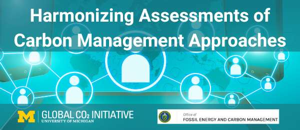Abstract
Ingeo polylactides are versatile biopolymers made from annually renewable resources and produced since 2001 by NatureWorks at what is now a 150,000 t/y facility in Blair, NE. NatureWorks published ecoprofile data for Ingeo production in 2003, 2007, and 2010. All the ecoprofiles were calculated using the Boustead Model, which has also been used by the European trade group PlasticsEurope (Brussels) since the early 1990s.
Since 2011, PlasticsEurope has been updating the ecoprofiles for major fossil-based polymers using different life cycle assessment (LCA) consultants and updated databases. To ensure consistency and ease of comparison, NatureWorks has just updated the Ingeo ecoprofile it published in 2010 using the GaBi (version 6.3) LCA software and the latest available databases. This paper provides a description of the Ingeo production system, the 2014 Ingeo ecoprofile, and the calculation and evaluation of different environmental indicators. The results for primary, nonrenewable energy and greenhouse gas emissions are compared with the latest available data for a selection of fossil-based polymers produced in Europe and the US. This work also discusses topics such as the value proposition of biobased materials, land use for Ingeo production, land-use change, and water use, and also provides remarks about the interpretation of some life cycle impact assessment indicators.
Introduction
Society has slowly begun to realize over the last few decades that it needs to put more effort into sustainable development from an economic(demand for food, feed, energy, and materials), social (need to boost employment and economic development), and environmental (greater emphasis on protection and renewable resources) standpoint. Action is needed to mitigate global climate change and become less dependent on fossil resources. To this end, national and international authorities, non-governmental organizations, and corporations are increasingly recognizing the need to move to a more biobased economy. Rapid technology innovation is enabling this process and making it possible to convert all kinds of biomass into useful materials and products. Bioplastics are recognized as one of the main building blocks in the new bioeconomy.
Ingeo biopolymers, developed by NatureWorks LLC, are biobased polylactide polymers produced in the US and 100% derived from locally abundant, renewable resources. They are used in a wide range of applications, including food service ware; films and sheets; rigid, thermoformed packaging; fibers and nonwovens; three-dimensional printing; and durable products. The intermediate, Ingeo lactide, is used in polymer additives, adhesives, coatings, printing toners, lactates, and surfactants. Ingeo biopolymers are also referred to as polylactic acid (PLA) or poly (2-hydroxy propionic acid). They are produced at NatureWorks’ 150,000-t/y manufacturing facility in Blair, NE.
In 2003, NatureWorks published the first cradle-(corn production)-to-polymer factory-to-exit gate life cycle inventory data, also often referred to as an ecoprofile, for Ingeo polylactide production.1 That paper also gave an introduction to Ingeo production technology, applications, and the life cycle assessment tool as applied to Ingeo. The 2003 data were based on a proposed 140,000-t/y plant design. In 2007, NatureWorks published an updated ecoprofile based on actual data collected from the production facilities, and newer data for the upstream and supporting processes.2 The 2007 paper also gave a more accurate description of the Ingeo manufacturing system and life cycle assessment (LCA) calculation procedure. It also included NatureWorks’s first report on the use of renewable energy certificates based on wind power and the resulting ecoprofile impact. These data, however, are no longer applicable since renewable energy certificates are no longer in use.
In 2010, NatureWorks published its latest ecoprofile.3 This publication was based on a package of technology improvements, especially advances in lactic acid production made since 1998 as part of a collaboration between NatureWorks and Cargill (Minnetonka, MN). This new lactic acid production technology was implemented in December 2008 and resulted in a reduced environmental footprint. The 2010 publication provided the ecoprofile for Ingeo produced starting in 2009.3 It also provided a description of the 2009 Ingeo production system and compared the energy requirements and greenhouse gas (GHG) emissions with previous and future Ingeo production systems. The paper also benchmarked the results for energy requirements and GHG emissions with data for a selection of fossil-based polymers.
The data provided in the underlying 2014 report are specific to the corn feedstock currently in use by NatureWorks, and the data are only valid for Ingeo and not for polylactide production in general. The ecoprofile data for polylactides produced elsewhere will be different due to the use of different feedstocks (i.e., sugarcane, sugar beets) and local production practices; different logistics; different technologies for processing sugars for fermentation; different fermentation and polymerization technologies; and different data for electricity and fuels used at all stages. For these reasons, the specific nomenclature “Ingeo” is used in this paper to clearly delineate wherever NatureWorks’ polylactide biopolymer is being referenced.
Since the beginning of the 1990s all ecoprofiles published by PlasticsEurope were calculated by Boustead Consulting (West Sussex, UK). In order to make direct comparisons with fossil-based polymers, NatureWorks worked with the same consultancy and used the same methodology, databases, and data lay-out to generate the Ingeo polylactide ecoprofiles. In 2011, PlasticsEurope decided to update the ecoprofiles for the fossil-based polymers using different LCA consultants—Institute for Energy and Environmental Research (IFEU; Heidelberg, Germany) for polyethylene terephthalate; PE International (Leinfelden-Echterdingen, Germany) for polystyrene and polycarbonate; and PriceWaterhouseCooper (London) for polyamides. Thus, NatureWorks began working with PE International to update the Ingeo ecoprofile using PE International’s LCA software GaBi (version 6.3) to ensure that meaningful comparisons could be made with the new PlasticsEurope data.
Up-to-date life cycle inventory data are needed by research institutes, universities, retailers, brand owners, and authorities to provide better insights into the environmental performance of the products they use and to investigate and make meaningful comparisons between products. The objective of this paper is to provide detailed ecoprofile data for Ingeo biopolymers of sufficient robustness, integrity, and quality so that LCA practitioners and stakeholders can confidently use the data in their own LCA studies. It must be noted, however, that the production and use of Ingeo biopolymers and products made from Ingeo biopolymers are still in their infancy compared with traditional petroleum-based polymers and products. Therefore, there is significant potential for further reduction in the environmental footprint of Ingeo biopolymers and products made from them over their complete life cycle. This paper reports on the life cycle performance/impacts of the 2014 Ingeo polylactide manufacturing system from cradle-to-polymer factory-exit gate for a 150,000-t production facility.
Switching manufacturing processes (and products) from fossil-based carbon feedstock (oil, gas, coal) to biobased carbon feedstock provides an opportunity for a zero material carbon footprint.4 Figure 1 illustrates the major flows in the global carbon cycle. In the atmosphere, carbon is present primarily as carbon dioxide (CO2). CO2 in the atmosphere is fixed as biomass during photosynthesis; this process has been going on for hundreds of millions of years and led to the vast resources of oil, gas, and coal that our society relies on at present. Since the beginning of the industrial revolution, these resources have been used at an increasing rate to produce materials, chemicals, and fuels. As a result, much of the carbon stored millions of years ago is now being released into the atmosphere in a very short period of time, geologically speaking. The result is that there is a net translocation of vast quantities of carbon from the earth into the atmosphere, leading to the above-mentioned increase in CO2 levels, which recently passed 400 ppm and continue to rise.5 The increasing level of CO2 and other GHGs such as methane and nitrous oxide trap more of the sun’s heat, thereby raising the average temperature of the atmosphere—including the land and oceans—and leading to global climate change. This process will dramatically affect life on this planet.
Author
Erwin T.H. Vink, Steve Davies
Source
Industrial Biotechnology, Vol. 3, Issue 11, 2015-06-11.
Supplier
Cargill, Inc.
IFEU - Institut für Energie- und Umweltforschung Heidelberg GmbH
Industrial Biotechnology Journal
Mary Ann Liebert, Inc. publishers
NatureWorks LLC
Plastics Europe
thinkstep AG
Share
Renewable Carbon News – Daily Newsletter
Subscribe to our daily email newsletter – the world's leading newsletter on renewable materials and chemicals










